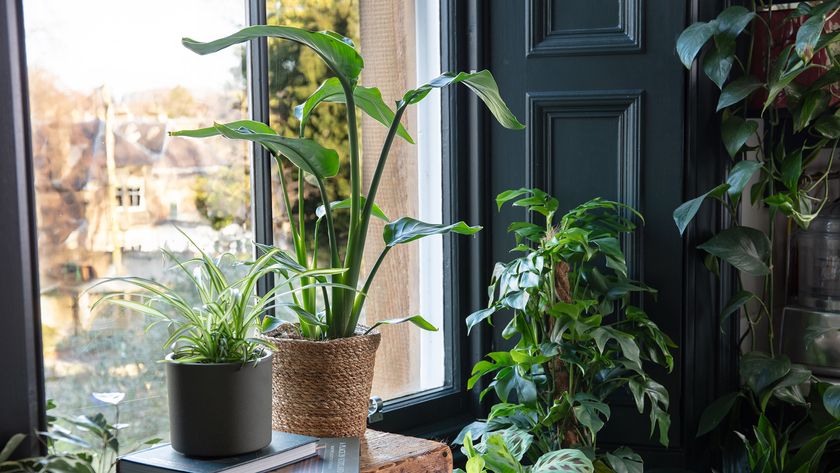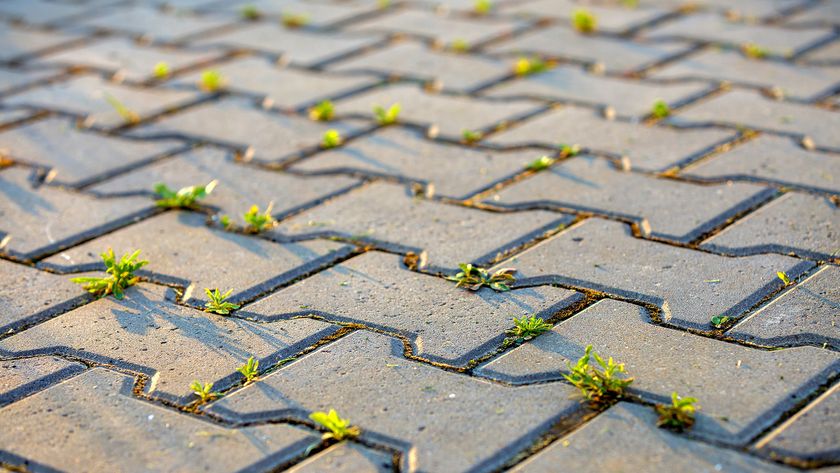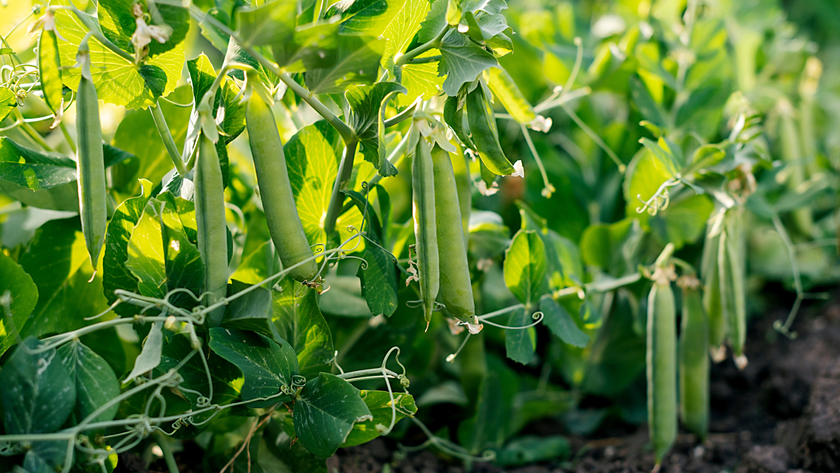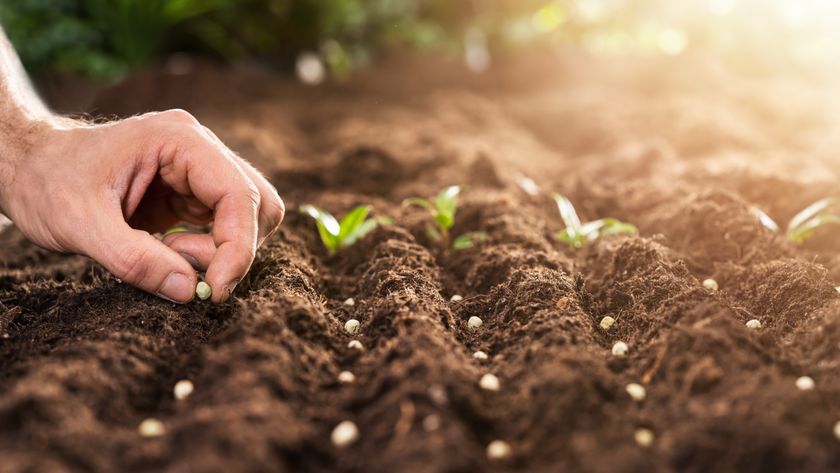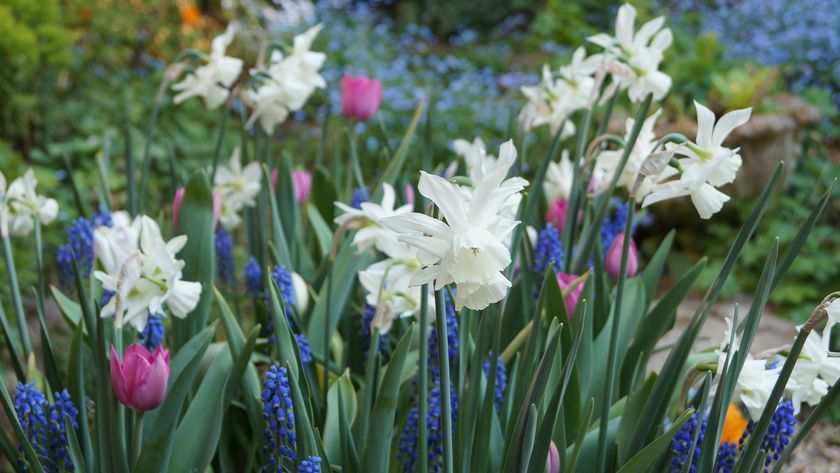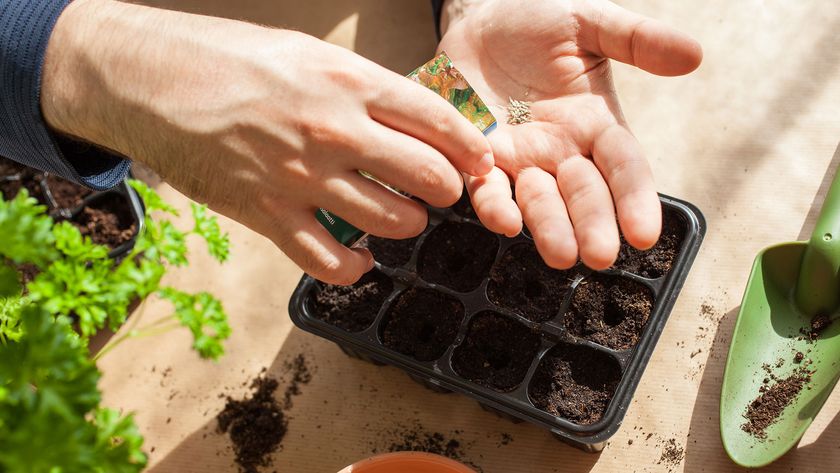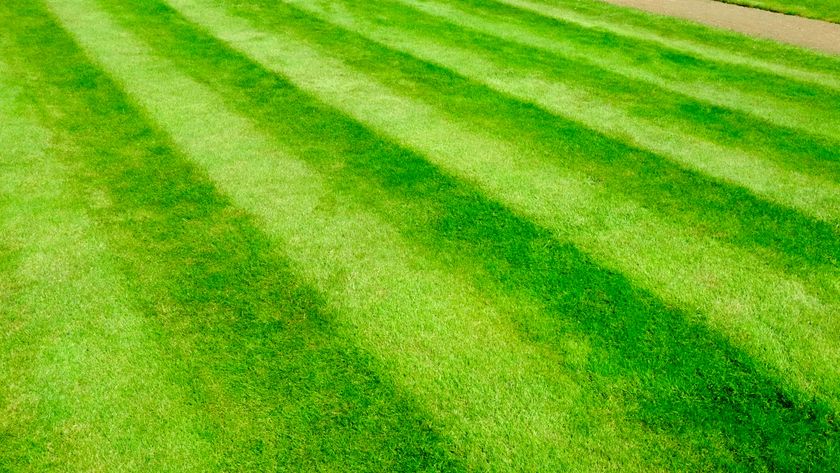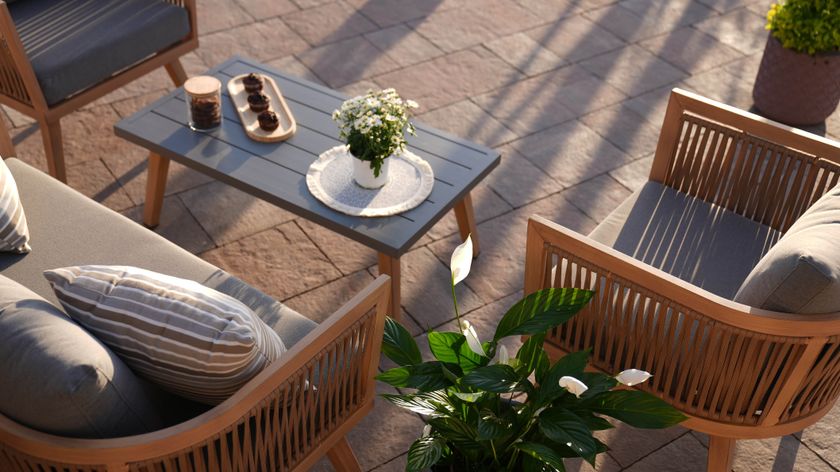How to get rid of tomato blossom end rot for a healthy harvest
Banish tomato blossom end rot for good with these 5 simple steps
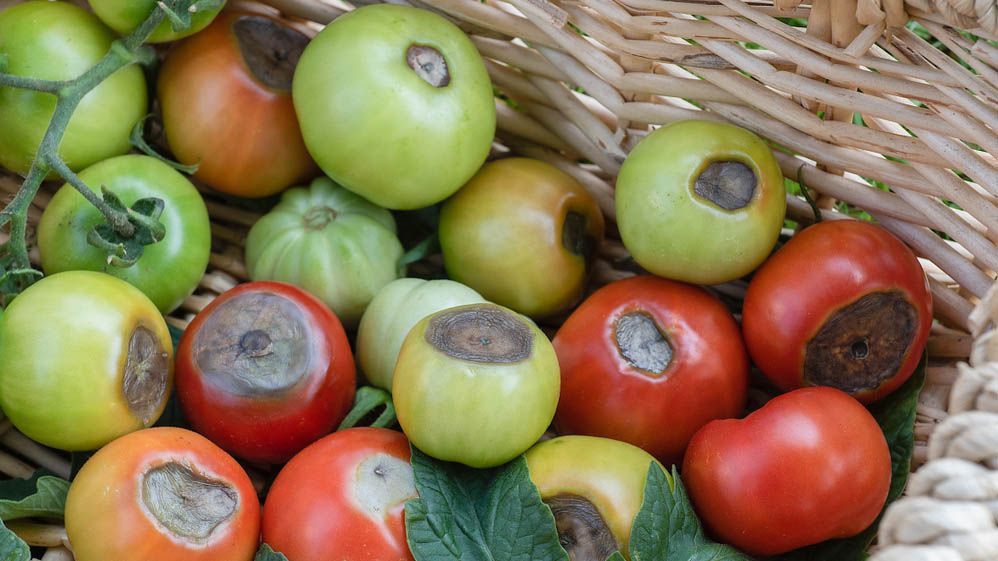
Nothing beats the taste of fresh, homegrown tomatoes. Not only are they far more organic than store-bought produce, but you can literally go from plant to plate when rustling up delicious meals. If you’ve managed to grow tomatoes from seeds or tomatoes in pots, it’s vital to know how to get rid of tomato blossom end rot for a healthy harvest.
So what is blossom end rot? Essentially, blossom end rot is a brown or black leathery spot that forms at the bottom of a tomato. While it looks like a classic sign of disease, this is actually caused by a lack of calcium brought on by dry conditions in the soil. In addition, inconsistent watering also contributes to blossom end rot.
Tomatoes usually grow at a rapid rate, and need calcium to ensure healthy development. When there are low calcium levels in the soil, the fruit’s tissue breaks down and forms the sunken lesion at the bottom. Since that’s where the tomato’s growing point is, any sign of deficiency will show up in that area.
Luckily, there are a few simple things you can do to prevent tomato blossom end rot, and save your beloved fruit. So, if your ripe tomatoes are ruined by unsightly blotches, here’s how to get rid of tomato blossom end rot for a healthy harvest.
We've also covered how to stop and prevent tomato blight, how often should you water tomato plants and when should you do it? Be sure to watch out for these 7 mistakes to avoid when growing your own tomatoes as well. And check out these 5 tips to ripen green tomatoes.
How to get rid of tomato blossom end rot
Sadly, once blossom end rot happens to a tomato, there’s not much you can do to save the fruit. Eventually, the rot will cover the lower half of the developing tomato, leaving it flat and inedible. Remove all affected tomatoes and throw them into the compost, before following these steps to get rid of tomato blossom rot.
1. Check your soil condition
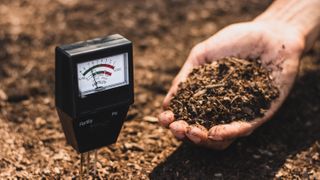
Do a soil test to make sure it has the right pH levels to help with calcium uptake. Experts recommend your garden soil pH should be as close to 6.5 if possible. This level is the right condition for calcium and other essential nutrients to be readily absorbed by the tomato plant. You can test the soil pH using a handy tool like this Soil pH Meter 3-in-1 Soil Tester ($14, Amazon).
Sign up to get the BEST of Tom's Guide direct to your inbox.
Get instant access to breaking news, the hottest reviews, great deals and helpful tips.
2. Add a source of calcium to soil

Since tomato blossom end rot is caused by calcium deficiency, add a source of calcium to the soil if needed. Homemade, organic sources of calcium include bone meal, ground oyster shell or finely crushed eggshells directly into the soil around tomato plants. This will help to maintain a steady calcium level during the growing season. Bone meal is particularly high in calcium and phosphorus, which are both essential nutrients for plant growth.
In a pinch, you can even add calcium carbonate tablets or powder — antacid tablets — to the soil. You can get a 500-gram bottle of calcium carbonate power for $13.25 on Amazon. As a bonus, you can also use it to treat your heartburn.
3. Water tomato plants well
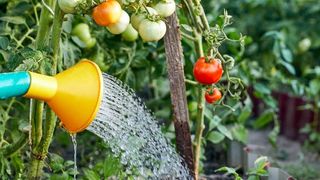
Water tomato plants daily, so the soil gets plenty of moisture to prevent blossom end rot. During a heatwave or in warm regions, you may need to increase your watering to twice a day. Experts recommend watering to a depth of six inches to give the roots a deep watering, but don’t overwater. As well as underwatering, too much water could also lead to rot. In any case, it may take a few weeks of consistent watering to see results, so don’t despair.
4. Apply mulch to base of plant
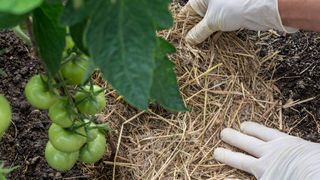
Add a layer of 2 to 3 inches of organic matter over the soil around tomato plants. Mulch helps to lock in moisture, keeping the levels stable for your tomato plants to thrive. Other good sources of mulch include straw, grass clippings, peat moss and shredded leaves. This will also keep weeds at bay, so you won't have to keep removing dandelions.
5. Use a tomato fertilizer
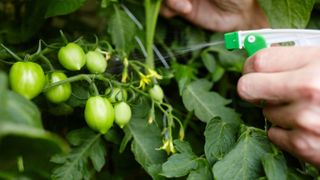
In addition, nourish your tomato plants with a liquid tomato fertilizer that includes calcium. Before fertilizing, always make sure your tomato plant is watered well. If the soil is dry, it can absorb too much fertilizer, and burn the plant. After watering, spread the fertilizer on the ground approximately 6 inches away from the base of the plant. Fertilizing too close to the tomato plant can lead to fertilizer running off onto the stem, and burning the plant.
Tips for growing tomato plants

- Water tomato vines regularly for at least an inch of moisture each week, and more in the summer
- Ensure you prune tomato plants often to boost new growth
- Stakes or a trellis will support your tomato plants and keep them off the ground. These also help them grow vertically, and save space in your backyard
- If you don’t have a garden but are using outdoor planters, avoid plastic pots. These prevent natural air circulation to the plant which can result in root damage or mold. Terra cotta pots are good for maintaining tomato plant growth
Before you get pruning, check out the 7 pruning mistakes you never knew you were making. And if you're new to the world of growing food, check out the 9 easiest vegetables to grow for beginners and see our guide on how to plant potatoes and when to do it. If you want a home project, you should also check out how to grow an avocado tree from a seed.

As the Homes Content Editor, Cynthia Lawrence covers all things homes, interior decorating, and garden-related. She has a wealth of editorial experience testing the latest, ‘must-have’ home appliances, writing buying guides and the handy ‘how to’ features.
Her work has been published in various titles including, T3, Top Ten Reviews, Ideal Home, Real Homes, Livingetc. and House Beautiful, amongst many.
With a rather unhealthy obsession for all things homes and interiors, she also has an interior design blog for style inspiration and savvy storage solutions (get rid of that clutter!). When she’s not testing cool products, she’ll be searching online for more decor ideas to spruce up her family home or looking for a great bargain!
